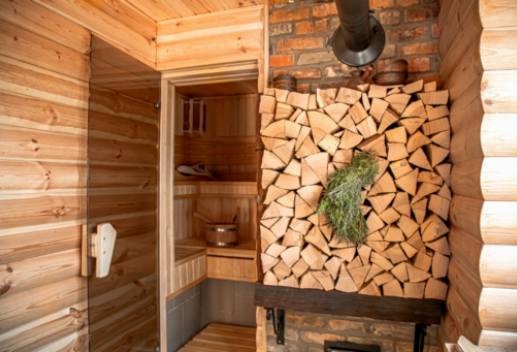How to Assess Wood Quality and Sustainability for Your Sauna
22 December 2025 by Jaya S.When it comes to building a sauna in your home, selecting the right wood is crucial for both aesthetics and sustainability. Understanding the environmental impact of different wood types, identifying sustainable sources, and assessing quality are all important factors to consider. By carefully balancing these considerations, you can create a beautiful and eco-friendly sauna that will provide you with years of relaxation and enjoyment.

Understanding the Environmental Impact of Different Wood Types
Wood selection is a critical factor to consider when building a sauna, not only for its durability and aesthetic appeal but also for its environmental impact. Different types of wood have varying levels of sustainability, with some species being more environmentally friendly than others. Understanding the environmental impact of different wood types is essential for making a conscious decision when selecting wood for your sauna construction. One important aspect to consider is the origin of the wood. Wood sourced from responsibly managed forests that adhere to sustainable forestry practices is considered environmentally friendly. This includes forests that are certified by organizations such as the Forest Stewardship Council (FSC) or the Sustainable Forestry Initiative (SFI). These certifications ensure that the wood is harvested in a way that maintains the health of the forest ecosystem and protects wildlife habitats. In contrast, wood sourced from illegal logging or clear-cutting practices can have a detrimental impact on the environment. Illegal logging contributes to deforestation, biodiversity loss, and habitat destruction, while clear-cutting can lead to soil erosion and disrupt the natural ecosystem. Opting for wood from sustainable sources helps support responsible forestry practices and conservation efforts. Another factor to consider is the growth rate of the wood species. Fast-growing trees such as pine or bamboo are considered more sustainable options compared to slow-growing hardwoods like mahogany or teak. Faster-growing trees have a shorter harvest cycle, allowing for more efficient use of resources and reducing the pressure on natural forests. Additionally, the durability and resistance of the wood species are crucial considerations for sauna construction. Choosing a wood species that is naturally resistant to moisture, insects, and decay can help prolong the lifespan of your sauna and reduce the need for chemical treatments. Hardwoods like cedar, redwood, and hemlock are popular choices for saunas due to their natural resistance to moisture and durability. In summary, understanding the environmental impact of different wood types is vital for making an informed decision when selecting wood for your sauna. Opting for wood sourced from responsibly managed forests, fast-growing species, and naturally durable wood varieties can help minimize your sauna's environmental footprint and promote sustainability in your home and garden endeavors.Tips for Identifying Sustainable Wood Sources for Sauna Construction
When it comes to building a sauna, choosing the right wood is crucial not only for its visual appeal but also for its sustainability. Here are some tips for identifying sustainable wood sources for sauna construction:Look for certifications: One of the easiest ways to ensure that the wood you're using is sustainable is to look for certifications from organizations such as the Forest Stewardship Council (FSC) or the Sustainable Forestry Initiative (SFI). These certifications indicate that the wood has been sourced from responsibly managed forests.
Consider local options: Opting for wood that is sourced locally can help reduce the environmental impact of transportation. Look for woods that are abundant in your region and are known for their durability and resistance to moisture, such as cedar or redwood.
Avoid endangered or restricted woods: Make sure to do your research and avoid using woods that are endangered or restricted for trade. This helps protect vulnerable ecosystems and ensures the longevity of these precious resources.
Choose fast-growing species: Some woods, such as bamboo or pine, are known for their fast growth rates, making them more sustainable choices for sauna construction. These woods can be harvested and replenished relatively quickly compared to slower-growing species.
Consider reclaimed or salvaged wood: Using reclaimed or salvaged wood not only adds character to your sauna but also helps reduce the demand for new wood. Look for reclaimed wood from old buildings, barns, or shipping pallets to give your sauna a unique and eco-friendly touch. By following these tips and selecting sustainable wood sources for your sauna construction, you can create a relaxing and environmentally-friendly space that you can enjoy for years to come.